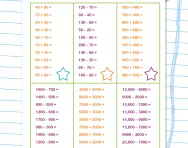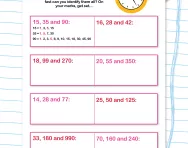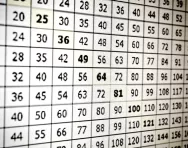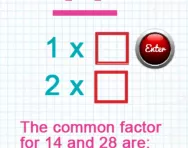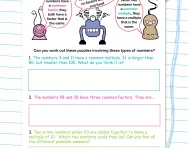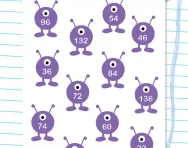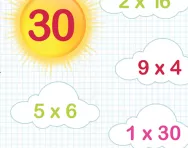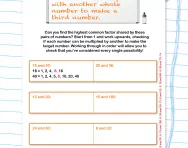Important update from TheSchoolRun
For the past 13 years, TheSchoolRun has been run by a small team of mums working from home, dedicated to providing quality educational resources to primary school parents. Unfortunately, rising supplier costs and falling revenue have made it impossible for us to continue operating, and we’ve had to make the difficult decision to close. The good news: We’ve arranged for another educational provider to take over many of our resources. These will be hosted on a new portal, where the content will be updated and expanded to support your child’s learning.
What this means for subscribers:
- Your subscription is still active, and for now, you can keep using the website as normal — just log in with your usual details to access all our articles and resources*.
- In a few months, all resources will move to the new portal. You’ll continue to have access there until your subscription ends. We’ll send you full details nearer the time.
- As a thank you for your support, we’ll also be sending you 16 primary school eBooks (worth £108.84) to download and keep.
A few changes to be aware of:
- The Learning Journey weekly email has ended, but your child’s plan will still be updated on your dashboard each Monday. Just log in to see the recommended worksheets.
- The 11+ weekly emails have now ended. We sent you all the remaining emails in the series at the end of March — please check your inbox (and spam folder) if you haven’t seen them. You can also follow the full programme here: 11+ Learning Journey.
If you have any questions, please contact us at [email protected]. Thank you for being part of our journey it’s been a privilege to support your family’s learning.
*If you need to reset your password, it will still work as usual. Please check your spam folder if the reset email doesn’t appear in your inbox.
What are multiples and factors?
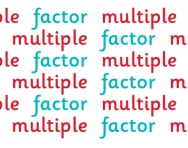
What are multiples and factors?
A multiple is a number that can be divided by another number a certain number of times without a remainder.
A factor is one of two or more numbers that divides a given number without a remainder.
Multiples and factors are best explained by using a number sentence such as the following: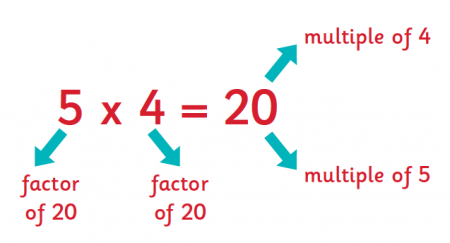
This number sentence tells us that 20 is a multiple of 5 and is also a multiple of 4.
It also tells us that 5 and 4 are factors of 20.
By Year 4, when children have learnt all their times tables they should be able to recognise multiples of any number up to 10.
For example, they may be given a number such as 24 and asked if it is a multiple of the following numbers: 10, 2, 5, 8, 6. Their knowledge of times tables should help them to work out that 24 is a multiple of 2, 8 and 6.
Children also learn about factors in Year 4.
They may be asked to identify pairs of factors of two-digit numbers.
- For example: they may be given the number 60 and asked to pick out two pairs of factors from the following numbers: 7, 3, 9, 8, 15, 4, 20. (The answer to this is 3 x 20 and 4 x 15.)
- They may also need to find common multiples. For example: they may be given the numbers 6 and 9 and asked to find three multiples that have both these numbers as factors. (The three numbers could be: 54, 18 and 36.)
In Year 5, children will continue to carry out tasks involving factors and multiples and this will extend to learning about prime numbers and square numbers.
Example investigations for Year 6 children could be:
Two factors of 90 are added together to make another factor of 90. What are the two factors?
What am I? I am a multiple of 4. I am between 25 and 50. I am also a multiple of 10.
Two square numbers are added together to make a multiple of 9. What could the two square numbers be?
By Year 6 children need to be really confident not only on knowing what factors and multiples are, but also on quickly working out the factors and multiples of various numbers. This means they can take quickly to these sorts of puzzles. They might able be asked to find the lowest common multiple or highest common factor of two numbers or a group of numbers.
Multiples and factors in KS1 and KS2
In Year 2, children are expected to recognise multiples of:
- 2 (these are 2, 4, 6, 8, 10, 12 etc.)
- 5 (these are 5, 10, 15, 20, 25 etc.)
- and 10 (these are 10, 20, 30, 40, 50 etc.).
The foundation for this knowledge is started in Year 1 where children practise counting in 2s, 5s and 10s.
In Year 3, children need to be able to recognise multiples of 2, 5 and 10 up to 1000.
They would be taught the rule that any number that has a last digit that is even (24, 68, 102. 888 etc) is a multiple of 2. They would also learn that any number ending in a 5 or 0 (25, 300, 605, 990 etc.) is a multiple of 5. And finally, any number that ends in a 0 (20, 800, 450 etc.) is a multiple of 10.
By Year 4, when children have learnt all their times tables they should be able to recognise multiples of any number up to 10.
For example, they may be given a number such as 24 and asked if it is a multiple of the following numbers: 10, 2, 5, 8, 6. Their knowledge of times tables should help them to work out that 24 is a multiple of 2, 8 and 6.
Children also learn about factors in Year 4.
They may be asked to identify pairs of factors of two-digit numbers.
- For example: they may be given the number 60 and asked to pick out two pairs of factors from the following numbers: 7, 3, 9, 8, 15, 4, 20. (The answer to this is 3 x 20 and 4 x 15.)
- They may also need to find common multiples. For example: they may be given the numbers 6 and 9 and asked to find three multiples that have both these numbers as factors. (The three numbers could be: 54, 18 and 36.)
In Year 5, children will continue to carry out tasks involving factors and multiples and this will extend to learning about prime numbers and square numbers.
Example investigations for Year 6 children could be:
Two factors of 90 are added together to make another factor of 90. What are the two factors?
What am I? I am a multiple of 4. I am between 25 and 50. I am also a multiple of 10.
Two square numbers are added together to make a multiple of 9. What could the two square numbers be?
By Year 6 children need to be really confident not only on knowing what factors and multiples are, but also on quickly working out the factors and multiples of various numbers. This means they can take quickly to these sorts of puzzles. They might able be asked to find the lowest common multiple or highest common factor of two numbers or a group of numbers.

